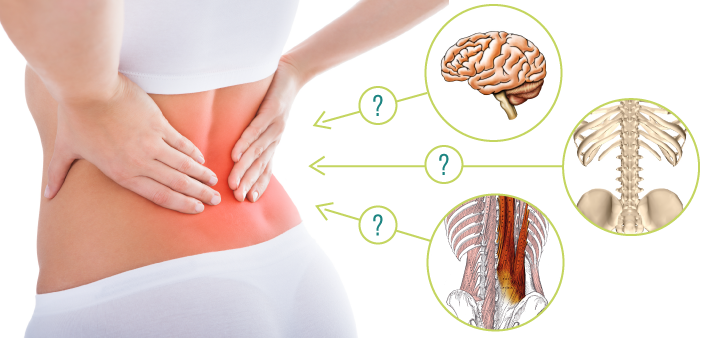Get your shoulders out of the box

A few years ago, my husband developed a nagging pain in his shoulder. It wasn’t sharp, but it was one of those pains that you hope will go away quickly, but somehow, it sticks around and keeps bugging you. As an experiment, I suggested one particular move for him to do every time before his gym workout. He stuck with it, and the pain was gone shortly after. He continues to do the move to this day, and his shoulder issue hasn’t recurred since.
What is this magic move? Well, in reality, there is nothing magic about it. It addresses the issue of the chronic internal rotation of the shoulder and reverses it. See, in our daily life, we rotate our shoulders internally constantly. Every time you hold your hands in front of you (to type, to drive, to wash the dishes), you rotate your shoulder joints slightly inward. Theoretically, it shouldn’t be a problem; after all, that is a natural arm position. Unfortunately, we do not counterbalance it with other shoulder movements all too often. We stopped hanging from the trees a long time ago, and it seems the further we move away from our athletic past, the less we use our shoulders. Pete Egoscue says: ”We don’t use the shoulders much these days. Our world of motion has been squeezed into an invisible 3-by-4 foot box that hangs in midair directly in front of us, covering an area roughly from the midthighs to the armpits. We reach into it to answer the phone, adjust the TV, and unlock the car door. We do little else outside this box; we take it with us wherever we go”.
But, you say, we break out of this box in our yoga practice! This is exactly right, except there is an interesting tendency I observe: when yoga teachers decide to work specifically on the shoulders in their yoga classes, they either:
A. Strain the shoulders too much with weight-bearing poses like Downward facing dog and Chaturanga Dandasana (read a full article about it) or
B. Do more of the same internal rotation that got us into trouble in the first place. Some of the more common poses used for shoulder work are these, and all of them involve internal shoulder rotation.
The good news is that we don’t have to invent any new poses to encourage our shoulders to rotate externally. All we have to do is add some specific adaptations to the familiar poses. Here are a couple of great options.
Simple arm sweep
Sweeping the arms out and over is the easiest way to loosen up your shoulders and works better than moving your arms forward and up. Just make sure that on the way up, you turn your arm so that your elbow crease is facing your head. You can add this movement to any number of poses (Tadasana, Virabhadrasana, Vajrasana, Shalabhasana, Utthita Trikonasana, etc.)
“Hitchhiker” move
This arm adaptation is one the most effective moves I know to encourage external shoulder rotation. In fact, this is the move that helped my husband get rid of his shoulder pain (in combination with the Warrior pose). Here, you begin with your thumbs pointing forward (as a hitchhiker). On the Inhale, you move into the pose, rotating the arms so that the elbow creases point forward and out; on the Exhale, you return to the starting position. It is useful to gradually raise the arms higher and higher as you go so that it challenges the shoulders a bit more each time. After repeating the movement a few times, you can stay in the pose and work with the internal/external rotation for a few breaths. This “hitchhiker move” is very effective when added to Virabhadrasana, Utthita Trikonasana, Salabhasana, and similar poses.

One of the most important things for us to remember is that your FOREARM CAN ROTATE, TOO! That is why even if your thumb is pointing outward, it DOES NOT mean that the entire arm is rotated outward.
Try this quick experiment. Relax your right arm down and hold on to your right upper arm with your left hand, limiting its movement. Make the hitchhiker gesture with your right hand, and then turn your thumb outward. You will be able to do it easily even though your upper right arm is being held in place by your left hand. Now loosen the grip of your left hand and rotate YOUR ENTIRE RIGHT ARM outward so that the elbow crease points outward as well. Now, your shoulder is rotating externally. Do you see how these two movements are completely different? Now add the movement of the thoracic spine as well – this will make the movement even more effective. That is why when you instruct your students to rotate their arms outward, you have to pay really close attention to how they are doing it. If their forearms rotate, but the shoulders are not moving at all, then this move will have no impact on their shoulders whatsoever.

Find out the three main ways to protect your shoulders in your daily life and in your yoga practice.











Great article again ,Olga! Love to read your blog 🙂
Hi Olga . First ,thank you for all your amazing work !
I have a question about a friend whose front hip “clicks” when lifting the leg
I do body work and can get into the deeper muscles that will help for just a little while and then it’s back
Any ideas on how to help her?
She does have a very tight psoas and I do get into that and she does stretches for it too
Thanks for any suggestions ❤️
You hit the spot every time Olga
Thank you for sharing your knowledge in such a clear way.
Best blog ever!
Thank you so very much Olga…
Thumbs up all round!!
THX soooo much for all your articles. I love your blog.
Did I miss what the particular move you suggested your husband was? I’d love to know! Thanks!
Hi Theodora! It’s this one. I hope it helps!
Thank you! <3 🙂
Thanks for this post!! Lovely
Olga- This is one of my favorite moves and I’m so happy to see you are are spreading the amazing therapeutics of this variation of movement. Love your posts. Wishing you well and Missing you in Portland!!
Hi Kimmie, so good to hear from you! Miss Portland, I hope all is well!
Awesome ideas! One thing I’d like to know more about; why the hitchhiker thumb? Could this be as effective with the palm flat or does the thumb add something extra that I’m missing?
Hi Michelle! There is no specific significance to sticking the thumb out. It serves more as a visual cue – if you ask a student to do “a hitchhiking motion’, most will know exactly what you are talking about. So yes, you can keep the palm flat, or make a fist, or whatever, as long as the essence of the movement remains the same! 🙂